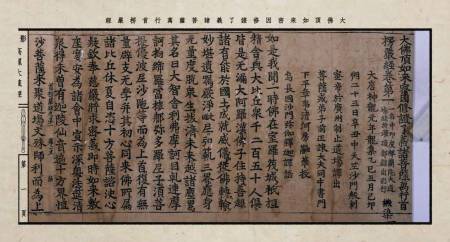<html>
<div style="font-family: Chalkduster; font-size: 13pt; color: #fff;">
<ul>
<li> <a href="http://www.camcc.org/">Home</a> + <a href="http://www.camcc.org/events">Events</a>
</li><li> <a href="http://www.camcc.org/about/Chinese-classics">Chinese Classics</a>
</li><li> Reading Groups
<ul>
<li> <a href="http://www.camcc.org/reading-group"> Chinese </a>
</li><li> <a href="http://www.camcc.org/reading-group/en/">English<sup>beta</sup></a>
</li></ul>
</li><li> <a href="http://www.camcc.org/discussion-group/">Discussion Grp.</a>
</li><li> <a href="http://www.camcc.org/tea-party">Tea Ceremony</a>
</li><li> <a href="http://www.camcc.org/tea-yoga">Tea Yoga</a>
<!--
</li><li> <a href="http://www.camcc.org/other-activities">More Activities</a>
-->
</li><li> <a href="http://www.camcc.org/blog/">Blog</a> + <a href="http://www.camcc.org/links">Links</a>
</li><li> <a href="http://www.camcc.org/about/">About Us</a>
<!--</li><li> <a href="http://www.camcc.org/contact">Contact Us</a> -->
</li><li> <a href="http://www.camcc.org/internal/home">Internal</a>
</li></ul>
</div>
</html>
----
[[president@camcc.org|Email us]]. Or follow us
on [[http://www.facebook.com/groups/182337131809002/|{{facebook.png?32}}]] [[http://page.renren.com/601199149|{{renren_logo.jpg?32}}]] [[http://blog.sina.com.cn/u/1965219823|{{wordpress.png?32}}]]
<html>
<div style="margin-top:-19px">
<div style="width: 22%; float: left; text-align:center">
<a href="http://www.camcc.org">
<img src="http://www.camcc.org/_media/logo-经典方篆-roften.png" width="145" height="145" alt="Camcc" />
</a>
</div>
<div style="width:78%; height:145px; float:right; margin-top: 0px; border-bottom:solid 5px #000000;">
<div style="width: 3%; float: left; margin-top:40px;"></div>
<div style="width: 67%; float: left; font-size: 115%; margin-top:15px;">
<h1>
Cambridge Chinese Classics</br>
剑桥中国传统文化研习社
</h1>
To study, practice and promote Chinese classics
</div>
<div style="width: 30%; font-size: 80%; margin-top: -10px; float: left;">
<div style="height: 130px;width: 100%;float:left">
</html>
**Coming events:**
{{iCalendar>https://www.google.com/calendar/ical/cam.chineseclassics%40gmail.com/public/basic.ics#from=today&previewDays=30&showEndDates=1&&numberOfEntries=1&showAs=list}}
<html>
</div>
<div style="height: 20px;width: 100%;float:left">
Join our <a href="https://lists.cam.ac.uk/mailman/listinfo/soc-camcc">mailing list</a>
</div>
</div>
</div>
</div>
<style>
#dokuwiki__aside {
//border-right: dashed 1px black;
border-right: none;
}
.dokuwiki .wrapper {
border-bottom: solid 1px black;
}
blockquote {
border-left: none !important;\\2px solid #8cacbb;
padding-left: 0.6em !important;
}
div.dokuwiki div.comment_wrapper { background-color: transparent !important;}
</style>
</html>
Sidebar
Table of Contents
《楞严经》Leng Yan Jing
Introduction
The following introduction are cited from the book The Surangama Sutra - Translated by Upasaka Lu K'uan Yu
“Enlightenment in Mahayana Buddhism consists in transmuting the mind into the Great Mirror Wisdom. And so the Surangama Sutra points directly at the Mind which when stirred by the first thought creates the basic illusion of an ego and splits the Whole into subject and object. ”

“In this sutra the Buddha began by stripping Ananda of this attachment to the illusory body and mind before revealing the One Mind. To teach how this One Mind can be realised he asked twenty-five Bodhisattvas to describe the different methods by which each had attained Enlightenment. Avolokitesvara’s method was judged the most suitable for mankind today.”
“The Buddha disclosed the cause of transmigration through the six worlds and of the attainment of the four saintly planes, describing these ten regions in some detail. Finally he detailed and warned against clinging to the various mental states experienced when practising the Surangama Samadhi. ”
Despite various dispute about this text over the authenticity and authorship, it has been especially influential and “is still a primary source for the Ch’an or Zen school” of Chinese Buddhism.
In this reading session, a selection from the first chapter is covered and discussed.
Text
References
Page Tools
User Tools
<html>
© Cambridge Chinese Classics, 2012 - 2017
<script type="text/javascript">
var _gaq = _gaq || [];
_gaq.push(['_setAccount', 'UA-27605058-1']);
_gaq.push(['_trackPageview']);
(function() {
var ga = document.createElement('script'); ga.type = 'text/javascript'; ga.async = true;
ga.src = ('https:' == document.location.protocol ? 'https://ssl' : 'http://www') + '.google-analytics.com/ga.js';
var s = document.getElementsByTagName('script')[0]; s.parentNode.insertBefore(ga, s);
})();
</script>
</html>